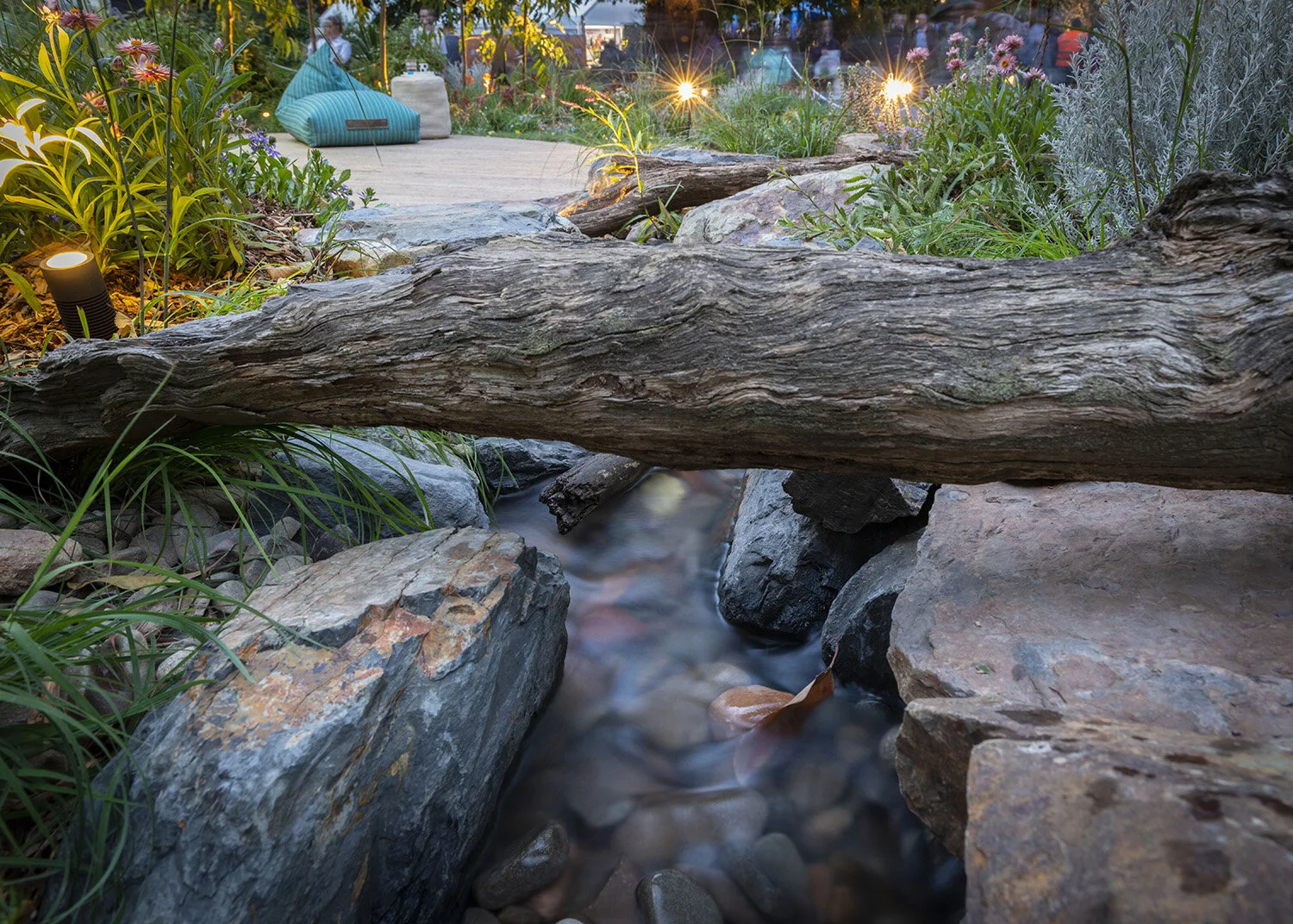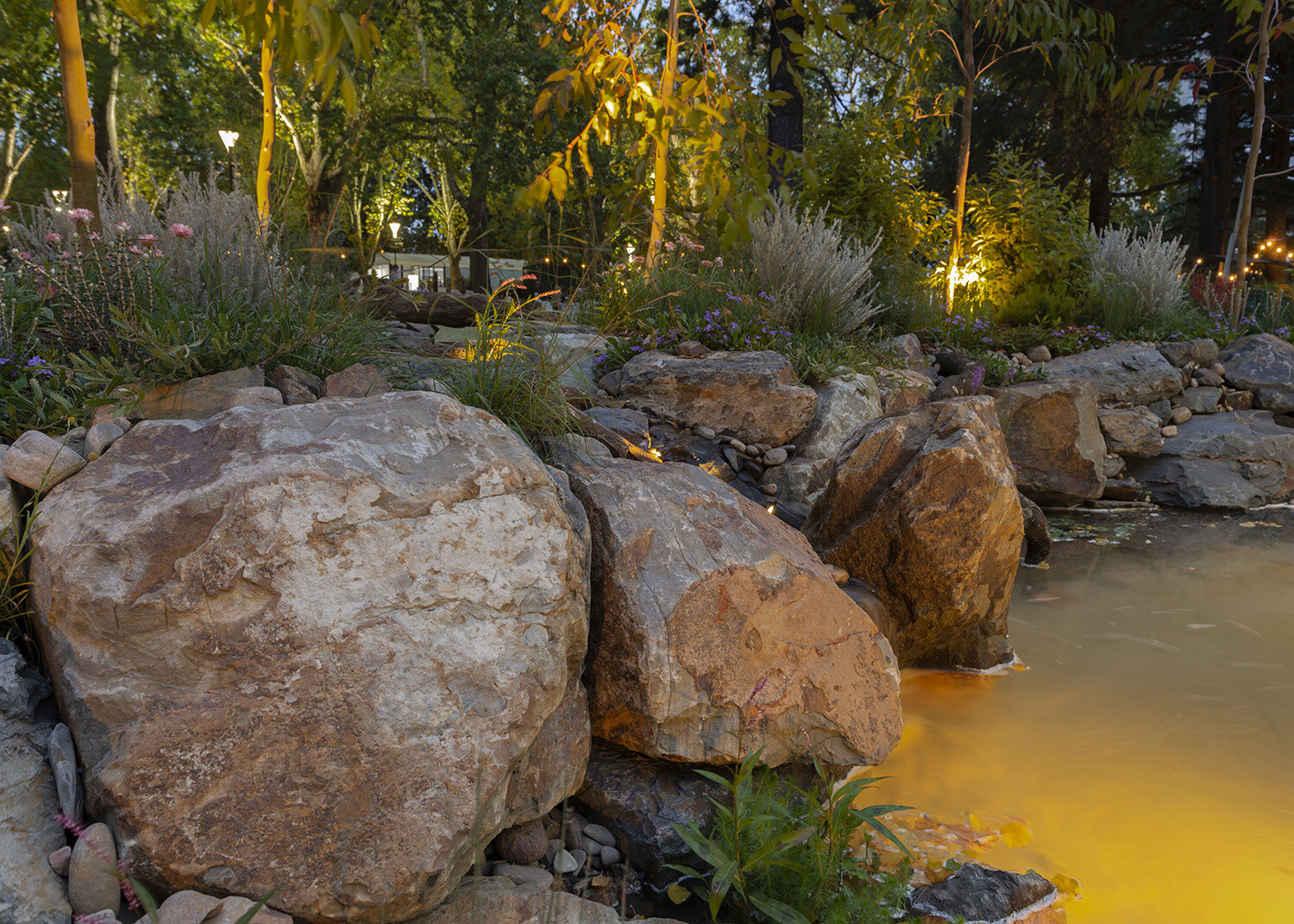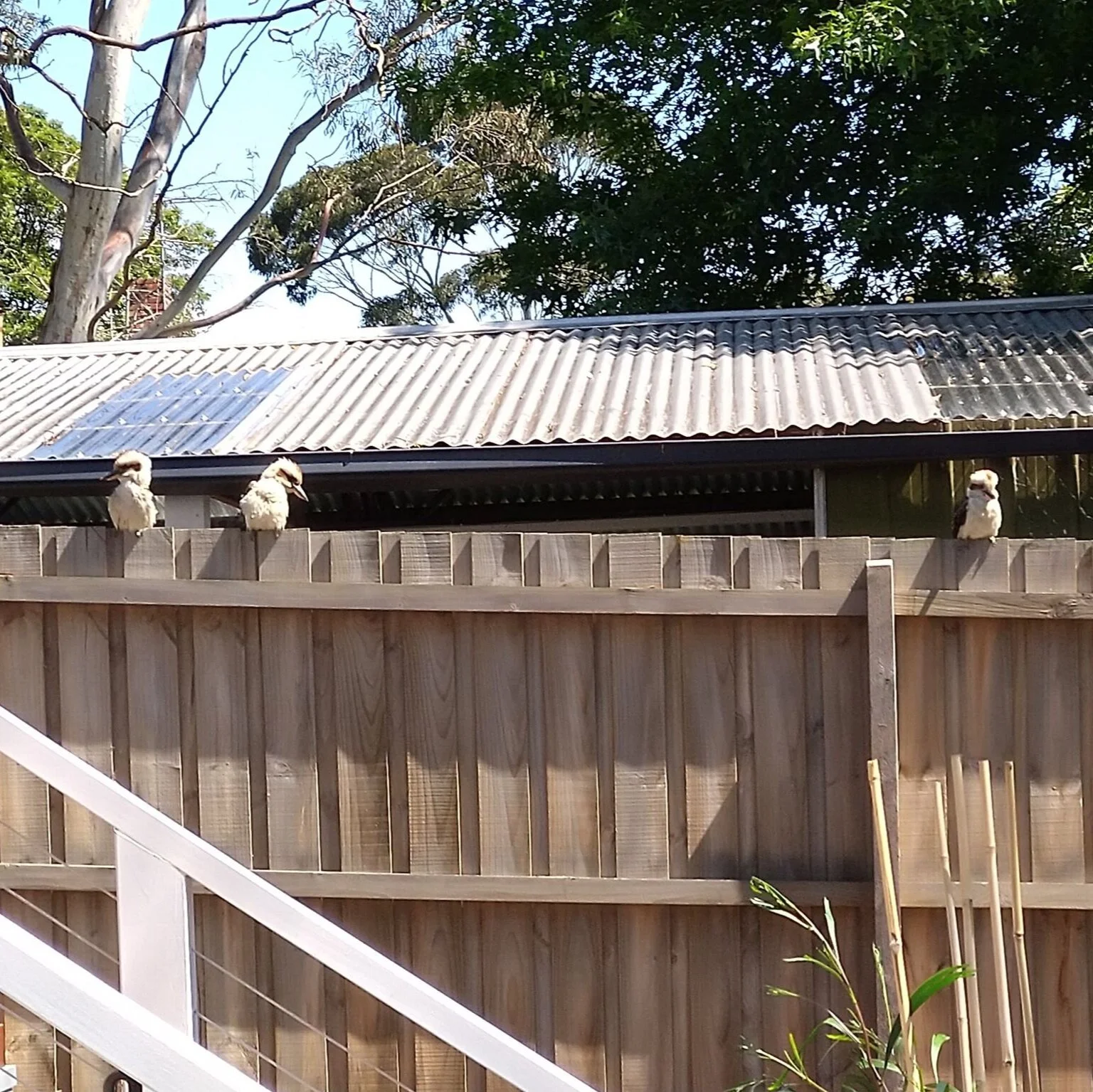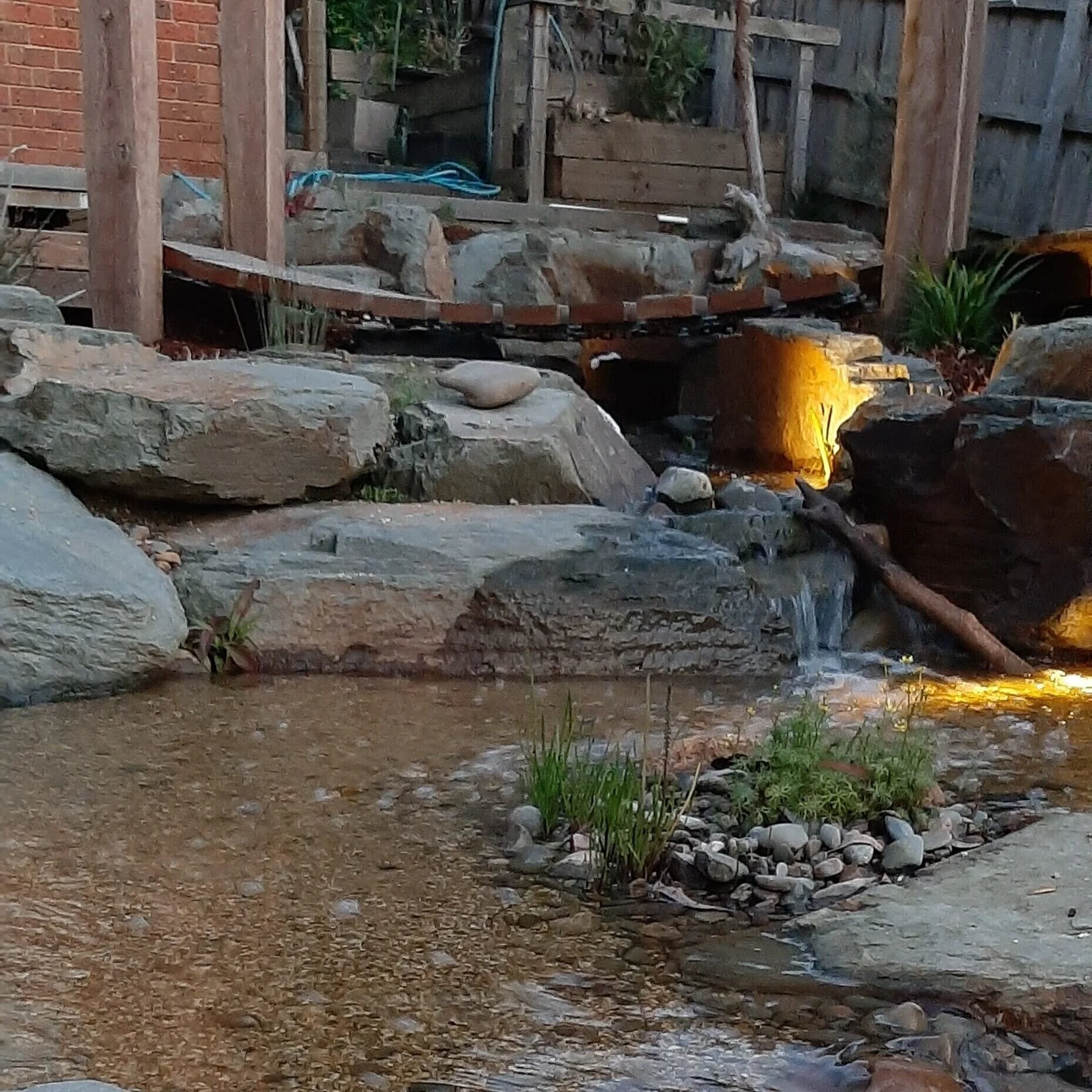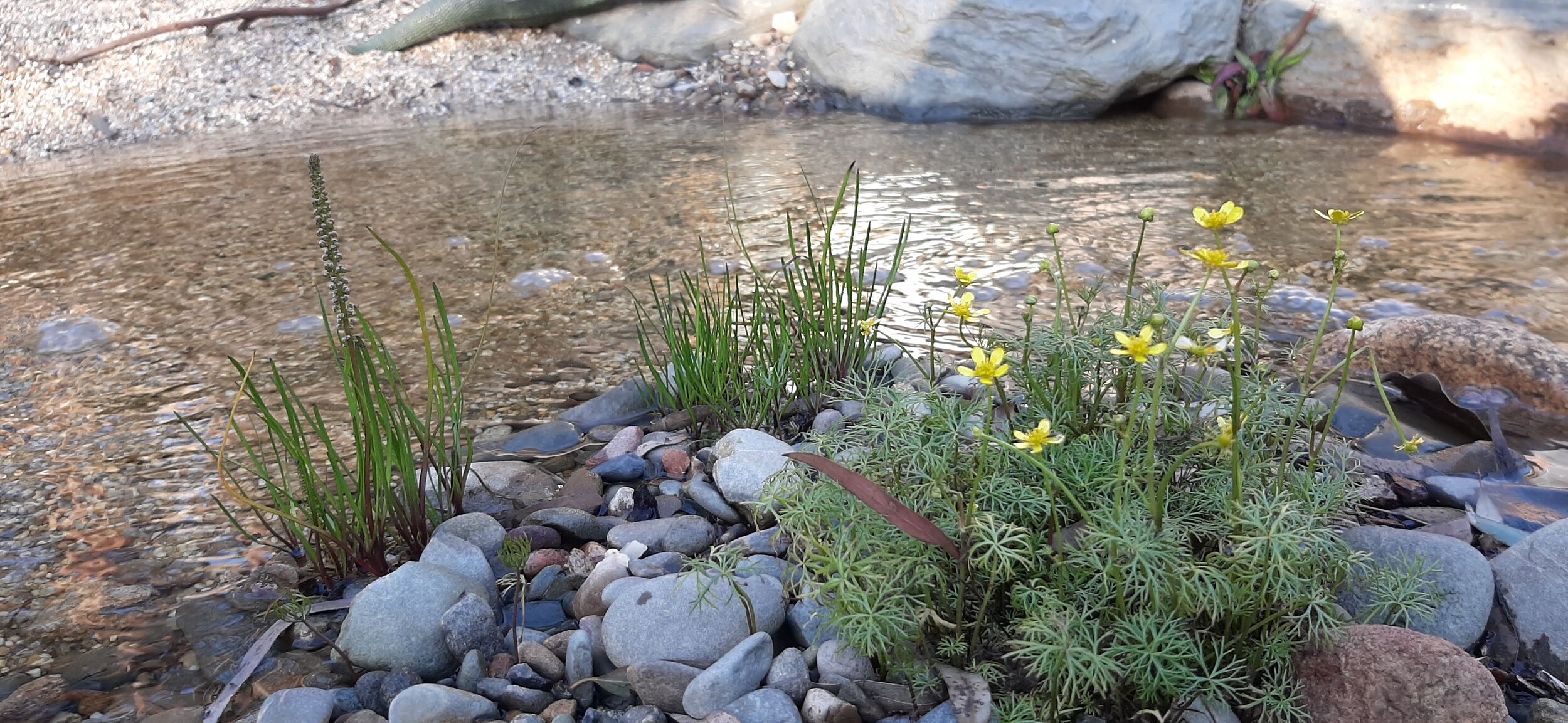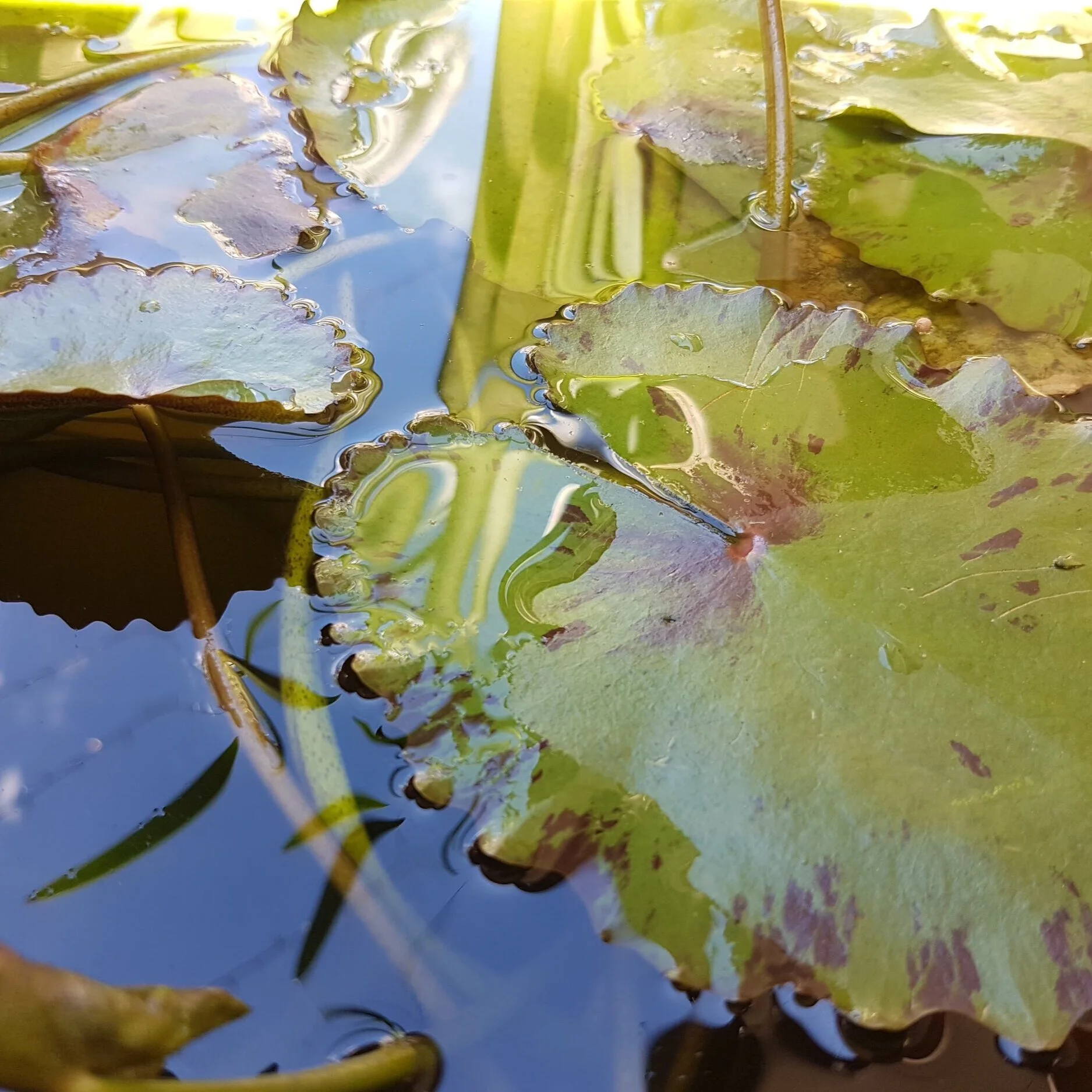Using water in your garden design
Do you love the sound of water in a garden?
A lot of people I talk to want some kind of water feature in their garden but shy away from it because they aren’t sure how to get started or are worried about maintenance. But, it’s actually really easy to achieve in almost anyone’s backyard.
You just have to choose the right design and type to suit your situation and garden; ponds, creeks, natural swimming pools, pond-less creeks and waterfalls, reflection pools, swales, dry creek beds, to name only a few.
I’m a big fan of natural creeks and ponds, like what you would find out in the Aussie bush.
I love the way they look, the way they sound and the creativity when building them. It’s the small details that make the biggest impact; like using an old log to change the flow of the water to create little rapids or the placement of rocks to change the sound of the water as it falls from a height.
Water attracts all kinds of wonderful animals, from birds to lizards to insects.
I spoke to a client of mine when writing this, and I had recently installed a large stream and pond system in their yard. They were telling me about how a group of Kookaburras came down for a bath in the pond - how cool is that?!
It’s a common misconception that putting fish in a pond will help keep it clean.
They don’t. They create waste.
To keep a pond clean, you need to replicate nature as best as you can. You need to really promote beneficial bacteria which will help to break down plant and animal waste into compounds that will be taken up and used by the plants. However, I do like having native fish in a pond in quantities that promote a good balance, fish like Murry River Rainbows are small but nice and help to eat unwanted bugs in the water.
Also keep in mind that moving water (like a connected creek or stream) will oxygenate the water which also helps keep it clean) and will also help to keep mozzies away.
There will always be a certain amount of algae in a pond, so expect that. However, if you use the method I’ve just spoke about, it will keep it to a minimum you’ll have a beautiful clear pond.
Lets quickly touch on aquatic plants too. Water lilies are generally the ‘go-to’ plant for a pond, they are beautiful and there are some stunning ones out there – but there are way more than just water lilies available.
There are a few varieties of native aquatic plants that look like a water lily, called Marshworts, which have leaves similar to that of the lily but also produce clusters of small, fluffy yellow flowers throughout the year.
There are so many important elements to consider when designing your ideal natural water feature, so take your time, do your research, and have fun designing it. There are endless possibilities for how to incorporate water in your garden, your imagination is your only limit!
Check out my Pinterest page on water features, there are some amazing designs and styles out there and it might inspire you to try something new for your garden.

